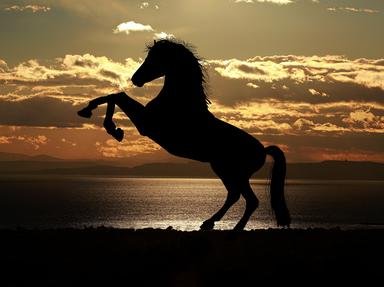Quiz Answer Key and Fun Facts
1. In which large city on the Baltic Sea would you be able to see the striking equestrian statue of the city's imperial founder, known as the "Bronze Horseman"?
2. Released in 1975, "Horses" was the debut album for which charismatic American singer-songwriter, nicknamed the "godmother of punk"?
3. The immortal horses Balios and Xanthos belonged to which famous Greek hero, who was also the son of a goddess?
4. What of these facts about the plants of the genus Equisetum, known by the common names of horsetail or mare's tail, is NOT true?
5. What is the name of the tenth avatar of the Hindu god Vishnu, generally depicted as a man wielding a sword and riding a white horse?
6. In which of these countries would you be able to partake of the drink made with fermented mare's milk known as airag or kumis?
7. Which of those animals, besides the ones in the photo, is an odd-toed ungulate, thus related to horses?
8. Which of these feline-sounding words denotes a heavily armoured soldier mounted on an equally armoured horse?
9. In JRR Tolkien's "The Lord of the Rings", what is the name of the land inhabited by a martial people known as the horse lords?
10. "Before the Race" is one of the paintings dedicated to horses by what influential 19th-century French artist, whose work is often associated with ballet dancing?
Source: Author
LadyNym
This quiz was reviewed by FunTrivia editor
agony before going online.
Any errors found in FunTrivia content are routinely corrected through our feedback system.

